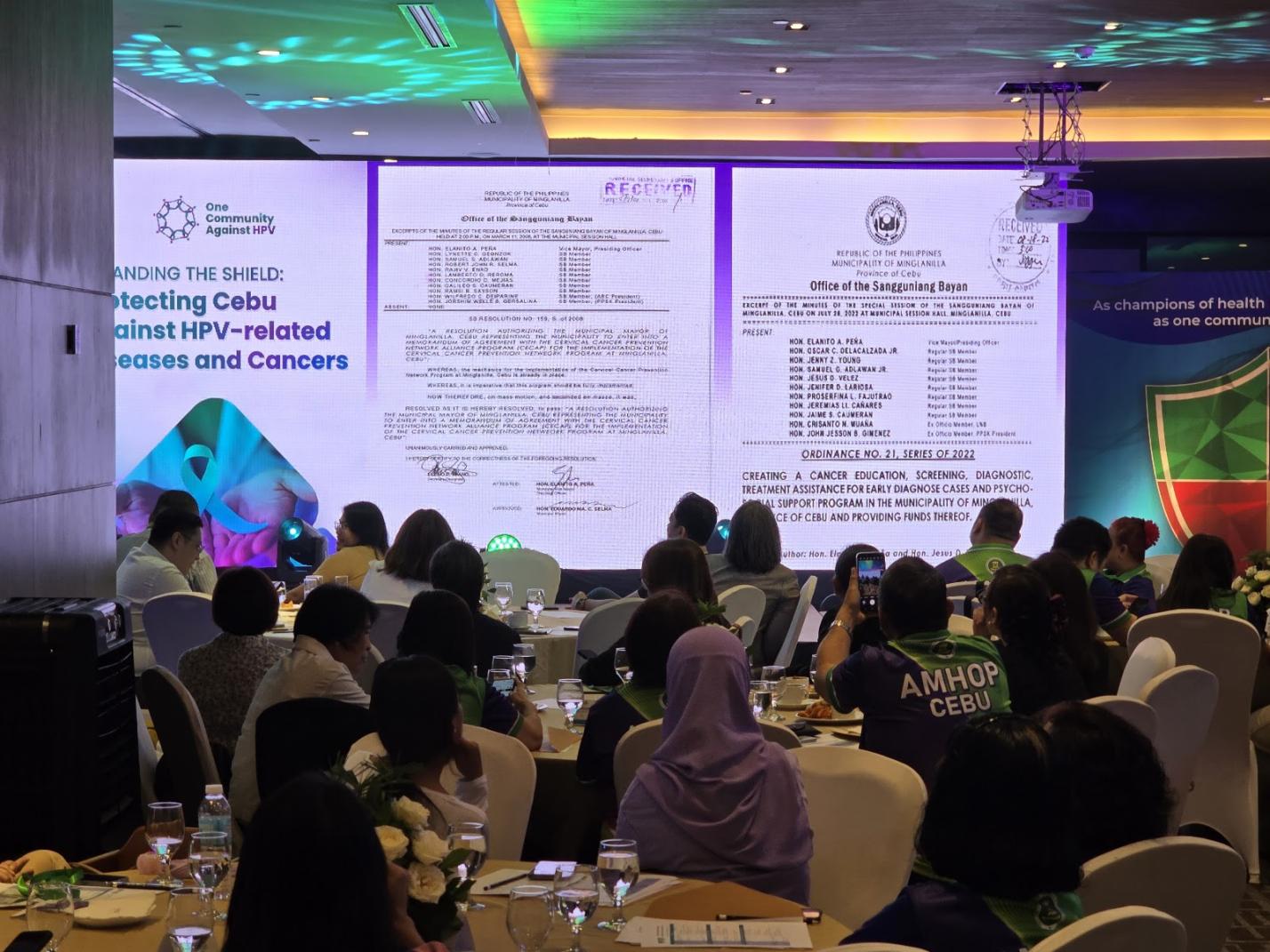By: Minerva Newman
CEBU CTY –More than 100 stakeholders from local government, medical societies, patient groups, and advocates gathered in Cebu City on September 5 for the “Cebu Cervical Cancer Elimination Summit” to localize the national agenda by highlighting the region’s progress, challenges, and opportunities in the prevention and to speed up the country’s commitment to eliminate cervical cancer.
“Cervical cancer is one of the most successfully treatable forms of cancer. It can be prevented through regular screening and vaccination against human papillomavirus (HPV), which causes about 99% of all cervical cancer,” Dr. Joan Antonette Albito, Medical Officer and Head, Non-Communicable Diseases Section, DOH-Central Visayas CHD said in her opening presentation at the summit.

Dr. Albito bared that cervical cancer is the fourth most common cancer in women globally with around 660K new cases and around 350K deaths in 2022 alone, and the highest rates of cervical cancer incidence and mortality are in the low and middle-income countries due to lack of access to national HPV vaccination, cervical screening and treatment services and social and economic determinants.
“Statistics show that an estimated 12 Filipinas die of this disease daily. It means every two hours, a woman loses her fight against cervical cancer, and a family loses a loved one. Cervical cancer, remains a major health challenge in the Philippines,” Dr. Albito noted.
According to 2023 data of ICO/IARC Information Centre on HPV and Cancer, cervical cancer is the second most common cancer among Filipino women, with over 7,000 new cases and approximately 4,000 deaths or more than half of them lose their lives reported each year. There are 39.6M women ages 15 years and older who are at risk of developing cervical cancer, Albito added.
Central Visayas cervical cancer incidence in 2021-2024 indicated that of the 14,946 women screened, 241 or 1.61 percent of them were positive or suspected cases of the disease, Albito noted that the screening coverage is very low which may lead to early detection, while those screened, positive rates were relatively high.

“As you can see, from 2021- 2024, there is an increasing number of deaths from Cervical Cancer in Central Visayas and in Cebu Province,” Dr. Albito said.
Localizing cervical cancer elimination program
In order to eliminate cervical cancer, collaborative efforts are a must to reach and maintain an incidence of BELOW 4 out of 100,000 women. It is reported that currently, the incidence is 15 out of 100,000 women. “We still have a long way to go. We still need to intensify our efforts by reaching more women to access preventive services,” the Summit participants agreed on this goal.
Part of the Summit was to engage the commitment of various local government units (LGUs) in Central Visayas to localize the national agenda of eliminating cervical cancer by providing more opportunities in prevention, screening and vaccination at the communities.

In a Media Forum after the summit, the panelists composed of Mary Beth Delos Santos, MD, POGS Cebu Chapter President; Oliver Gimenez, MD, AMHOP Cebu Chapter President; Sheila Faciol, MD, AMHOP Cebu Chapter Vice President; Joan Antonette Albito, MD, DOH Non-Comm Coordinator and Rosalie Tamala, Patient Representative, acknowledged that Cebu has made progress but needs to accelerate efforts in vaccination.
There is a need for strong investment from LGUs to scale HPV vaccination because such investments ensure sustained resources for prevention. The panelists also highlighted a multi-stakeholder’s collaboration, including government agencies, LGUs, medical societies, the private sector, and the media as vital to close prevention and treatment gaps.

The Summit participants ended the forum with key commitments—that Cervical cancer is preventable and can be eliminated through the WHO’s 90-70-90 strategy which is 90% of girls fully vaccinated with HPV vaccine by age 15; 70% of women screened with a high-performance test by age 35 and again by age 45; and 90% of women identified with cervical disease receiving treatment.
The Summit adapted some key actions to coordinate with municipalities and organizations to conduct cervical cancer screening and treatment campaigns. Educate parents about the safety and effectiveness of the HPV vaccine and conduct vaccination drives in schools.
The need to increase the IEC (Information, Education, and Communication) drive on HPV vaccination through TV, radio, and other social media channels, and explore ways for local government units to invest in and sustain their own HPV vaccine supply, beyond the allocation from the Department of Health (DOH).












